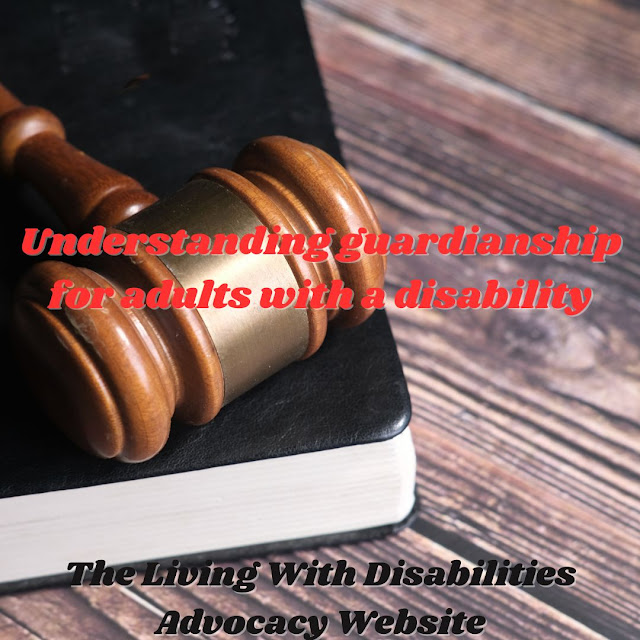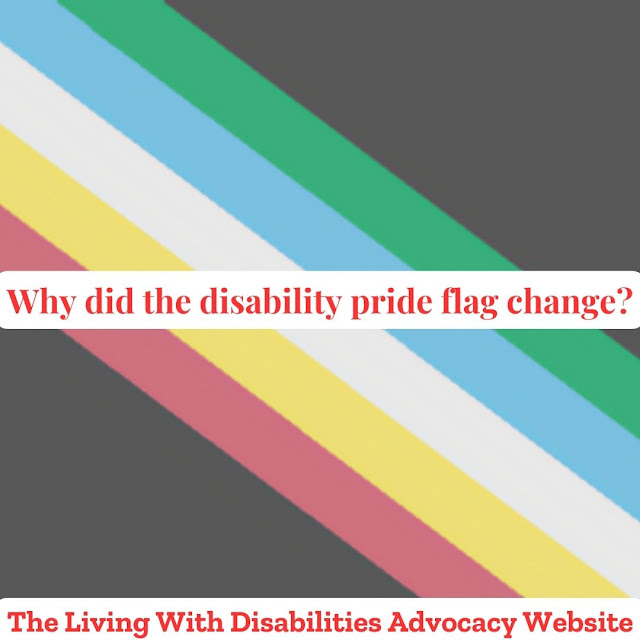Disability 101: Crash course into the disabled world
Before we hit into Disability 101: Crash course into the disabled world. I would like for you to take a few minutes into getting yourself situated and be ready to take a few minutes of reflections (meditations), clear out any thoughts that maybe negative, and open your mind to a better understanding of what you are about to take in.
Do feel free to take down any type of notes you get from this article, there is no right or wrong in taking notes. Your notes are for you and you only.
What's a disability? Any condition of the body or mind. These conditions come in many forms, Mental and Physical. Mental disabilities come in different varieties, and these are called invisable disabilities, you won't know unless a person speaks up about their disability. Pysical disabilities, are obvious, you can see the person disability. Here is where a pysical disability can become difficult, Spinal Cord Injury, Spina Bifida, some people with Spina Bifida use wheelchairs, you can't tell if that person has SCI, or SB unless they speak about it. There are other disabilities that are difficult to see, when it comes to a person in a wheelchair.
A person with Mental or Physical conditions. Similar, to what has been mentioned, a condition of the body and mind. Let's go through the list of disabilities, and see if you can match them up with Mental or Physical disabilities.
List
1. Blindness
2. Diabetes
3. Cancer
4. Seizure/ Epilepsy
5. Intellectual disabilities *We'll discuss this category a little bit further in this article.
6. Autism
7. Cerebral Palsy
8. Multiple Sclerosis
9. Muscular Dystrophy
10. Bipolar Disorder
11. PTSD (Post Traumatic Stress Disorder)
12. Obsessive-compulsive disorder
13. Schizophrenia
Note: A person who is Deaf, deaf, HOH, or Late deaf, does not consider themself's as disabled. And Living With Disabilities will not place, Deafness on the list because it takes learning to understand deeper into the Deaf Culture. And we will stray away from the word society like's to use, Retardations. *Using the R-word will be a whole different article on its own.
Let's get back into this Crash course, shall we? Living With Disabilities has left thirteen disabilities on the list. And that's just some of them. We're not going to go all the way down the list here. What's the meaning behind creating this list is to show there are disabilities that are noticeable and not noticeable. Despite, Wheelchair or not. Even if, a person is in a wheelchair their disability can remain disclosed. by no means, label a person with a disability.
Everyone closes their eyes and pictures themselves in a bubble that will not burst. This paragraph Living With Disabilities is going to talk about intellectual disabilities and how do these disabilities affect a person. Do note that each disability will affect differently. Before Living With Disabilities shares this information, Katrina would like to share something with you that she has experienced, do take it away Katrina!
Thank you, I was on a site called: Quora, a formboard site where people ask questions. When people ask questions you will get a notification in your inbox. So, one person asks this question, My daughter (18) all of a sudden thinks she has mental health issues and wants to see a therapist. I don't believe her because she has never shown any symptoms. What should I do? The person before my comment left a long comment with a Trigger warning to follow. And I of course agreed with them. (I'll give you a clip of the comment, and I'll go into mine before giving it back over to Living With Disabilities.) The person went on and told this mother, to imagine all the Scenario, of what if's? giving this mother something to really sit back and think about the situation her daughter is facing. Me being a person with a disability applied back to the mother's question. stating this: Yes! a person with a mental condition looks normal on the outside until they speak up about their issue. It's no different than a person who has a stomachache even a headache, you don't know until someone speaks up about it. Should you just brush it off and tell her all the wrong things? No! take her to see someone about it. And stand beside her like you have stood beside her before. Know that just because she didn’t have a disability, or condition beforehand does not mean she will never have one. Disabilities and medical conditions can happen to anyone at any age. Take your daughter seriously and let her get check for it. I got one upvote.
People who have a mental condition once again don't show signs of their disability until they speak up about it. And in this case, Katrina shared the mother of the 18-year-old, who feels she has a mental disability. The only way to know if a person has a mental disability is to get them tested. Take them to their primary care physician, or mental health professional. by no means, brush it off like there is nothing wrong.
Breaking down barriers after barriers on Intellectual disability.
First, you are going to want to know what an intellectual disability is. And what levels are there of intellectual disabilities?
To answer some of your questions about intellectual disabilities, Living With Disabilities will take it one step at a time. Intellectual disability involves problems with general mental abilities that affect functioning in two areas: intellectual functioning. like learning, problem-solving, judgment, adaptive functioning, communication, and independent living.
What are the levels of intellectual disability? There are four levels: mild, moderate, severe, and profound. There are two other levels that you may not be sure about: other and unspecified. Also, what are the causes of intellectual disabilities?
The cause of ID can and will vary. Why don't Living With Disabilities take you down the list?
1. Injury before birth, Such as an infection or exposure to alcohol, drugs, or other toxins.
2. Injury during birth, Such as oxygen deprivation or premature delivery.
3. Hereditary, Such as Phenylketonuria (PKU) or Tay-Sachs disease.
4. Chromosome abnormalities, Such as Down Syndrome.
5. lead or mercury poisoning.
6. Severe malnutrition or other dietary issues. (Not eating proper food your body needs.)
7. Severe cases of early childhood illness, Such as whooping cough, measles, or meningitis.
8. Brain injury.
Living With Disabilities does not want to leave you on the ID (intellectual disabilities). The next thing to know about people with intellectual disabilities is the various symptoms they experience.
Symptoms
1. sitting, crawling, or walking later than their peers.
2. problems learning to talk or trouble speaking clearly.
3. memory problems.
4. Unable to understand the consequences of actions.
5. Unable to think logically.
6. Kidlike behavior.
7. Lack of curiosity.
8. Difficult learning.
9. Below 70 IQ.
10. Unable to live on their own due to challenges, communications, taking care of themselves, or interacting with others.
Behaviors that follow with Intellectual disabilities
1. Offensiveiness
2. Dependency
3. Withdrawing from Social activities.
4. Attention-seeking behavior.
5. Depression during adolescent and teen years.
6. Lack of impulse control.
7. Passivity.
8. Tendency toward self-injury.
9. Stubbornness.
10. Low self-esteem.
11. low tolerance for frustration.
12. Psychotic disorders.
13. Difficulty paying attention.
And lastly, we're going to tackle the levels of ID.
Mild
1. Taking longer to learn to talk, but communicating well once they know-how
2. Being fully independent in self-care when they get older.
3. Having problems with reading and writing.
4. Social immaturity.
5. Increased difficulty with the responsibilities of marriage or parenting.
6. Benefiting from specialized education plans.
7. Having an IQ range of 50 to 69.
Moderate
1. They're slow in understanding and using language.
2. They may have some difficulties with communication.
3. Can learn basic reading, writing, and counting skills.
4. They're generally unable to live alone.
5. They can get around on their own to familiar places.
6. They can take part in various types of social activities.
7. They generally have an IQ range of 35 to 49.
Severe
1. Noticeable motor impairment.
2. Severe damage to, or abnormal development of, their central nervous system.
3. Generally having an IQ range of 20 to 34.
Profound
1. Inability to understand or comply with requests or instructions.
2. Possible immobility.
3. Incontinence.
4. very basic nonverbal communication.
5. Inability to care for their own needs independently.
6. The need for constant help and supervision.
7. Having an IQ of less than 20.
other and unspecified
Deaf, deaf, HOH, and late deaf are listed under "other." As Living With Disabilities had mentioned, people who live in the Deaf community don't classify themselves in this category. Therefore, Living With Disabilities will not talk in this manner because it takes Education in learning about Deaf Culture to understand. Therefore, we will not cross the barrier on this topic.
If the doctor cannot determine the cause, the child's disability will be classified as another. And if there isn't enough information about the child's disability, it will be considered unspecified.
Please do allow Living With Disabilities, to give an example of how unspecified works. Before wrapping up this article. Example: Katrina Smith has a Learning disability caused by an automobile accident. Therefore, her disability is caused by a brain injury. What level does Katrina's Learning disability sit at? Katrina is unsure.
Do stick around for another crash course into the disabled world. Living With Disabilities would like to hear what you have learned from this article in the comments section. and share with others.
Work Cited Page
Health Line https://www.healthline.com/health/mental-retardation#symptoms
ahttps://www.dropbox.com/s/ohu32kqbh9cahcj/Lilly%20Pond%20.mp3?dl=0nd Geoff HarveyChris Martyn and Geoff Harvey
Touch of Zen: Chris Martyn and Geoff Harvey




Comments
Post a Comment